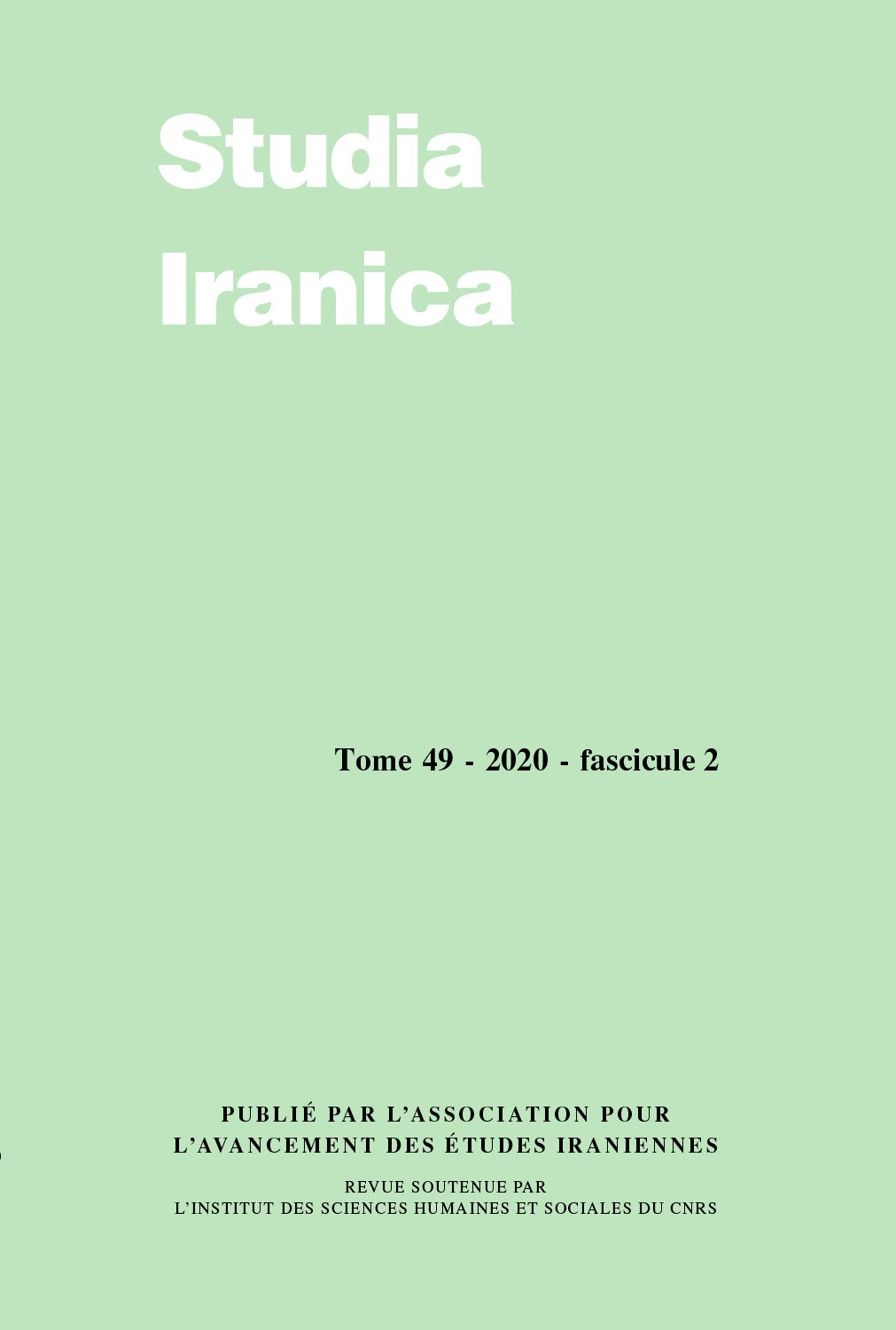 previous article in this issue previous article in this issue | next article in this issue  |

Preview first page |
Document Details : Title: 6666 or the Figure of Ahreman's Invasion Subtitle: A Note about Wizīdagīhā by Zādspram 28,2 Author(s): PANAINO, Antonio Journal: Studia Iranica Volume: 45 Issue: 2 Date: 2016 Pages: 165-196 DOI: 10.2143/SI.45.2.3203414 Abstract : The presence in the Wizīdagīhā ī Zādspram 28,6 of an explicit reference to the figure 6666 in connection with the manifestation of Ahreman’s arrival into the world immediately suggests a direct comparison with the 'Number of the Beast', 666, appearing in the Apocalypse of John, 13, 17-18. The author analyses many symbolic interpretations of this number and its importance in the Early Christian tradition, in particular in the framework of Irenaeus’s Adversus Haereses and the related chiliadic milieu. While the presence of this number in the Mazdean context seems to be another evidence supporting the thesis of a Western influence on Iranian apocalypticism (in spite of the apparent absence of Syriac versions of the Apocalypse of John in earlier times), the circulation of millenaristic doctrines presents a more complex situation, in which also the Iranian component should have played its remarkable impact in earlier times. La présence dans le chapitre 28,6 des Wizīdagīhā ī Zādspram d’une référence au nombre 6666 en relation avec la manifestation de l’arrivée d’Ahreman dans le monde, suggère une comparaison immédiate avec le 'Nombre de la Bête', 666, qui apparaît dans l’Apocalypse de Jean, 13, 17-18. L’auteur analyse les nombreuses interprétations symboliques de ce nombre et son importance dans la tradition chrétienne ancienne, en particulier dans le cadre du cinquième livre du Contre les Hérésies d’Irénée de Lyon et dans le milieu associé du chiliasme. Si la présence de ce nombre dans le contexte mazdéen tardif semble être un autre élément appuyant la thèse de l’influence occidentale sur apocalyptique iranienne (nonobstant, dans le cas spécifique du nombre de la Bête, l’absence de traductions syriaques de l’Apocalypse de Jean avant le XIème s.), l’analyse du contexte historique de la circulation des doctrines millénaristes présente une situation plus complexe, dans laquelle la composante iranienne doit avoir eu aussi un impact remarquable. |
|


